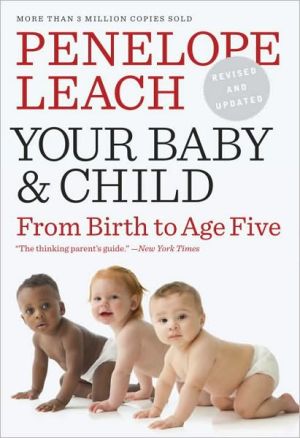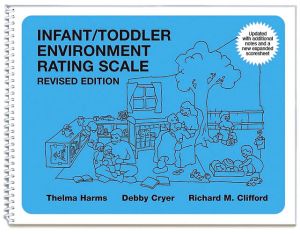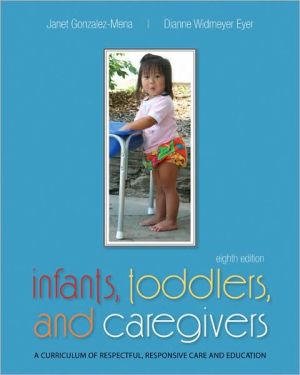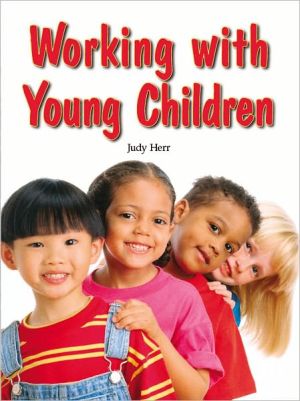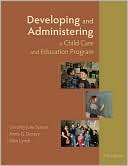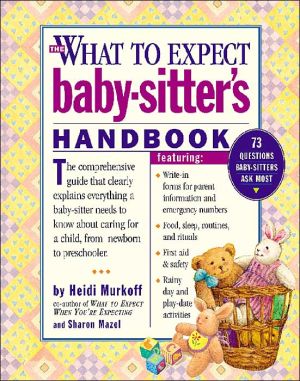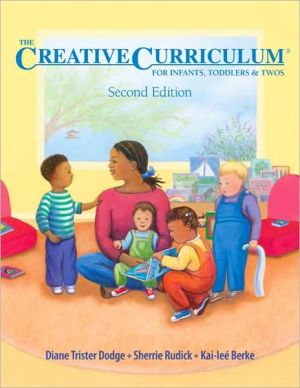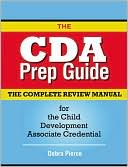Your Baby and Child
This newest edition of Penelope Leach’s much-loved, trusted, and comprehensive classic—an international best seller for twenty-five years, with nearly two million copies sold in America alone—encompasses the latest research and thinking on child development and learning, and reflects the realities of today’s changing lifestyles.\ In her authoritative and practical style, Leach responds fully to parents’ every concern about the psychological, emotional, and physical well-being of their...
Search in google:
This is the new, fully updated version of the authoritative childcare classic. New features include sections of parents' most-asked questions and Dr. Leach's answers, as well as all new safety information. Library Journal This updated version of the child-rearing standard by renowned British psychologist Leach is touted by the publisher as the "essential guide fully revised for today's family." Although the five chapter subdivisions based on the child's age remain the same, and some of the opening essays on each age are lifted almost verbatim from the 1989 edition (Knopf), critical updates in some areas of concern, such as SIDS (Sudden Infant Death Syndrome), make this an essential purchase. In addition to physical growth and progress, Leach addresses the psychosocial needs of children. She also includes parent concerns and responses similar to those found in Workman's "What To Expect" series. Public and academic libraries would do well to stock the new version of this primer on children and their development for circulation as well as for the reference shelf.Lisa Williams, Moline Southeast Lib., Ill.
The Importance of Reading to Children\ A web-exclusive guide for parents written by Penelope Leach, Ph.D.\ When parents read aloud to their children, everyone wins. It's fun for the adult and great for the kids. Easy for you and good for them. You don't even have to ration it because, unlike TV or ice cream, there's no such thing as too much.\ There's no such thing as too early, either. If you wait until pre-school to start reading to your children, you'll have missed out on years. If you even wait until they can talk, you'll have missed out on months. Start showing your baby pictures and telling her about them as soon as she focuses her eyes on the pattern on your sweater or the change-mat.\ "Reading" to tiny babies is a way of talking to them; and talking not only speeds brain development, but cements relationships as well. Make sure that anyone who ever cares for your baby takes reading to her for granted."Reading" to older babies is a way of expanding their experience. You can't always find a real cat or truck or fried egg to tell him about, but you can always find their pictures in books. And linking the sight of things with the sounds of their names boosts language learning.\ Reading to toddlers is education and loving and talking and fun. It's about language itself and discovering the joys of jokes and rhymes and huge long words that roll round the tongue and trip it up. It's about learning to "read" pictures to find the meanings of words or the answers to questions hiding behind those thrilling pull-tabs: where's the kitten gone? There he is...And eventually it's about the sheer, entrancing magic of stories unfolding between the pictures and the voice; playing to a dawning imagination, a fledgling ability to put herself in someone else's place.\ And reading to pre-schoolers is all that, plus a welcome to our culture where everything—even on the information highway—revolves around the written word. Pictures on the page are his introduction to print; being read to helps him toward written language, now, just as it helped him toward spoken language two years ago.\ Once your kids are hooked on being read to, they will never be bored if somebody will read, and since there are bound to be times when nobody will read and they are bored, they'll have the best possible reason to learn to read themselves.\ Reading to themselves isn't a signal to stop reading to them, though. Whether your child is five or seven or nine years old when he starts to read stories to himself for pleasure, the mechanics of the words will still get between him and their enthralling sounds and meanings. Read just one more chapter; one more poem. You have nothing to lose and your kids have everything to gain.
Introduction 9The NewbornGetting together 23The first days of life 31Newborn characteristics 38Feeding and growing 55Everyday care 90Excreting 104Sleeping 107Crying and comforting 113Learning from each other 124Heavy heads and reflexes 132Senses and sensations 135The Settled BabyThe first six months 141Feeding and growing 148Teeth and teething 173Everyday care 174Excreting 177Sleeping 179Crying and comforting 185Muscle power 190Seeing and understanding 196Hearing and making sounds 204Playing and learning 211Loving and spoiling 216The Older BabyFrom six months to one year 225Feeding and growing 233Teeth and teething 248Everyday care 253Excreting 255Sleeping 256Crying and comforting 269More muscle power 277Seeing and doing 289Listening and talking 294Playing and learning 303Enjoying the bridge from baby to toddler 310The ToddlerFrom one year to two and a half 321Eating and growing 329Teeth and teething 340Everyday care 343Toilet mastery 349Sleeping 356Crying and comforting 366Even more muscle power 380Learning speech 391Playing and thinking 399Moving into early childhood 416The Young ChildFrom two and a half to five years 431Eating and growing 436Teeth and teething 447Everyday care 450Toilet mastery and after 454Sleeping 462Crying and coping 471Bodies, minds and feelings 482Talking 493Playing and thinking 509Learning how to behave 523Early years education 538Index 554
\ Library JournalThis updated version of the child-rearing standard by renowned British psychologist Leach is touted by the publisher as the "essential guide fully revised for today's family." Although the five chapter subdivisions based on the child's age remain the same, and some of the opening essays on each age are lifted almost verbatim from the 1989 edition (Knopf), critical updates in some areas of concern, such as SIDS (Sudden Infant Death Syndrome), make this an essential purchase. In addition to physical growth and progress, Leach addresses the psychosocial needs of children. She also includes parent concerns and responses similar to those found in Workman's "What To Expect" series. Public and academic libraries would do well to stock the new version of this primer on children and their development for circulation as well as for the reference shelf.Lisa Williams, Moline Southeast Lib., Ill.\ \ \ \ \ New York Times Book Review"The thinking parent's guide."\ \
